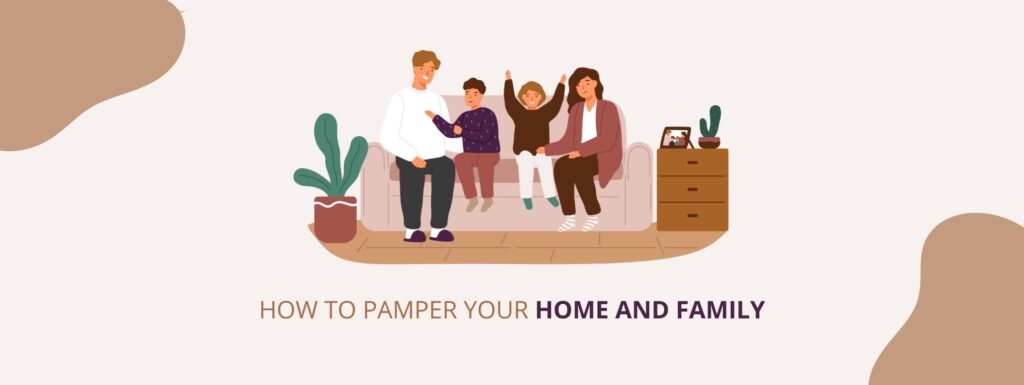
A home is a place of peace and comfort — where your soul feels most alive.
It is rightly said there is no place like home. It’s a place where you can relax, unwind, and feel at ease.
But every house doesn’t feel like home. One needs to consciously create an ambiance that enlightens their mood and has a positive impact on their well-being.
Aesthetics plays a huge role, however, it is just one piece of the puzzle. There is a whole theory of psychology about how your chosen home decor can affect your emotions and overall mood.
Looking to create the home of your dreams? Learn the space psychology behind the home renovation and get ready for a dose of nostalgia.
What is Interior Design?
Interior design is more than just making spaces aesthetically pleasing and functional. It involves personalized design that is just made for you, a design that is cherished across generations.
It requires all aspects of planning, designing, and coordinating the physical appearance, functions, and layout of an area. It often involves choosing materials or design approaches that suit a particular project or need.
Interior designers can work on single rooms within their homes or large groups of interiors like corporate offices, retail stores, hospitals, and museums. They can also work on residential projects such as new homes or remodels, providing faux finishes including paint layers to recreate an old look (investment modifications).
It is a multifaceted profession that includes:
- Architectural Design
- Space Planning
- Architectural and Engineering Drawing
- Construction Documentation
- Contract Negotiation
- Client Relations
- Management of other Design Professionals
Long story short, interior design is the process of enhancing the artistic qualities of the indoors of a house or other living space. It is a creative profession that combines architecture, art, and technology.
Why Does Interior Design Matter?
Interior design is a proven way to improve mental health, according to an international study carried out by the University of Toronto and published in the British Journal of Psychiatry.
The research, which was led by psychiatrist Dr. Bianca Acevedo, found that tailored design that takes into account each individual’s personal history and emotions is a proven way to boost the well-being of everyone around the space.
They are different reasons explaining the importance of interior design such as:
- Good interior design can improve the quality of the air in a space, ensuring adequate lighting, and a comfortable & ergonomic environment.
- A well-designed space can make all the difference in how you feel, think, and contemplate — evoking positive feelings to be more productive.
- Interior design isn’t only going to improve the look and feel of your home, it can also be a powerful stress buster.
Interior design is also important from a business perspective.
- A well-designed space can improve the overall output, while a poorly designed space can lead to a decrease in efficiency.
- It can enrich a positive impression on clients and customers, which can lead to increased business.
How Can Interior Design Benefit You?
Interior design is not just a luxury. It’s a necessity. It matters because it makes a person feel more comfortable in his or her living space. Every room in your home should be functional and aesthetically pleasing, and this is what interior design helps you achieve.
Interior design matters for various reasons, such as
Aesthetic Appeal
Having a well-designed home will make it look more aesthetically pleasing and welcoming. It will make your home look more expensive than it actually is and will also encourage others to come to visit you more often.
Interaction
Having a well-designed home will make it easy for people to interact with each other. It will also make it easy for people to interact with the objects in your home. This is especially true if you have children at home and you want them to respect your things.
Comfort
Having a well-designed home will make it more comfortable to live in. You will also be able to rest and relax in your home better if it is well-designed. There are many ways to do this, such as choosing soft and breathable fabrics.
Tips for Improving the Aesthetics of Your Home
Interior designers are experts at balancing our needs with their own aesthetics and memory banks.
But there’s more to it. What makes interior designing so compelling isn’t in the fancy furniture and ornate designs, but rather in how well it works for us psychologically.
Let’s explore several tips to achieve the aims of interior design.
Colour
Colour is the next important element of interior design that you should pay attention to. You can select colors that match your personality and lifestyle. It will help to impart a personality to your home that is completely yours.
Colour can make you feel happy, relaxed, or sad. You can use colors in your interior design to make yourself feel a certain way. For example, yellow walls will make you feel energized, red walls will make you feel passionate, and blue walls will make you feel calm – Choose the colors that match your persona.
Light
Light is one of the most important elements of interior design that you should pay attention to. It helps to create the perfect mood and is necessary to make your home look attractive at all times. You can even integrate lighting fixtures into your design scheme to make your home look attractive at all times.
The amount of light in your home can also influence your mood. Having too much light can make you feel stressed out while having too little light can make you feel sad.
Pattern
Pattern is another important element of interior design that you should pay attention to. It is a creative and wonderful form of expressing yourself. Patterns can be used in everything from furniture and fabrics to wall paint and tiles.
Patterns on the walls, rugs, furniture, and even fabrics can influence your mood. For example, polka dots are very playful, chevron patterns are very retro and hip, and floral patterns are quite soothing.
Surface
Surface Design is about more than just colors and furniture. It’s also about how these elements are arranged, how they interact with one another, and what effect this has on the mood of a room.
Whether you’re designing an entire house or just a single room, knowing how each element affects your mood can help you create space psychology that suits your needs.
It is another important element of interior design that you should pay attention to. It deals with the materials that are used to create your home. It includes flooring, walls, furniture, and even accessories like wall art.
Scale
The scale of the objects in your design can influence your mood. For example, large pieces of furniture can make you feel closed off and uncomfortable, while small objects can make you feel warm and cozy.
The key to using the scale in your design is moderation. If you have a large room, then it’s fine to have larger pieces of furniture, but don’t go overboard! Keep the overall tone of your space balanced and neutral so that it doesn’t overwhelm the senses.
Make Your House Feel Like Home
Interior design definition is much more than just putting some furniture into a room and calling it done. It’s about creating a space that reflects your personality and makes you feel comfortable in the home you live in. If you feel like your home is missing something or if you are looking for ways to make it more aesthetically pleasing, then hiring an interior designer may be the best option for you. They will help you create the perfect space psychology for your lifestyle. They can provide advice on color schemes and furniture placement, but most importantly they can be there with you every step of the way to make sure that everything looks exactly how you want it.
